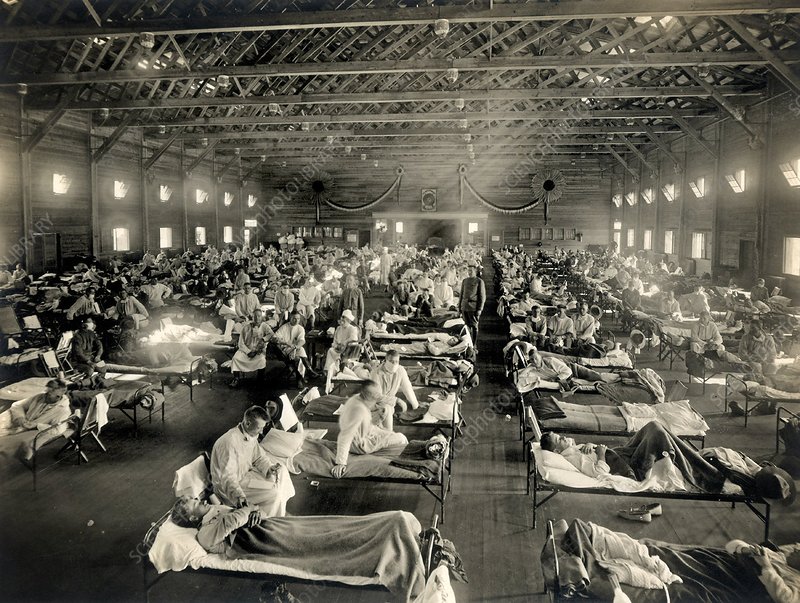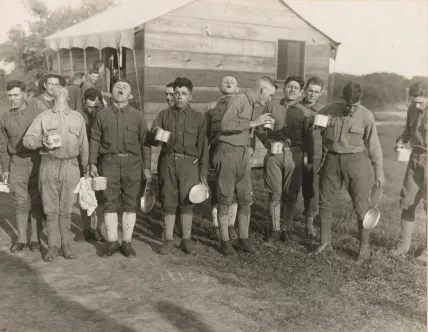
The pandemic, primarily triggered by the Spanish flu, led to widespread hospitalization and widespread deaths, particularly in the ward at Camp Funston, Kansas.
As WWI was coming to an end, the world was hit by another hardship, the Spanish flu. It caused widespread illness and death, starting in Fort Riley, Kansas in March, 1918, and later spreading overseas, hitting the majority of Europe and part of North Africa. This caused significant effects on the health of the world. The pandemic brought to light the significance of international collaboration, medical breakthroughs, and public health initiatives in tackling global health emergencies, such as the American Red Cross (ARC). It also promoted the creation of vaccinations and more robust healthcare systems. In general, the Spanish flu influenced how future pandemics would be handled and acted as a motivator for improvements such as vaccines, quarantine, and sanitation laws.

The pandemic, primarily triggered by the Spanish flu, led to widespread hospitalization and widespread deaths, particularly in the ward at Camp Funston, Kansas.

Troops in Camp Dix, gargling salt water as a precaution after a hard days work. - Photo, September 24, 1918.
Eshmal Fatima & Jaellyn Portillo
Senior Group Division
Word Count: 1160
Media Count: 1:12